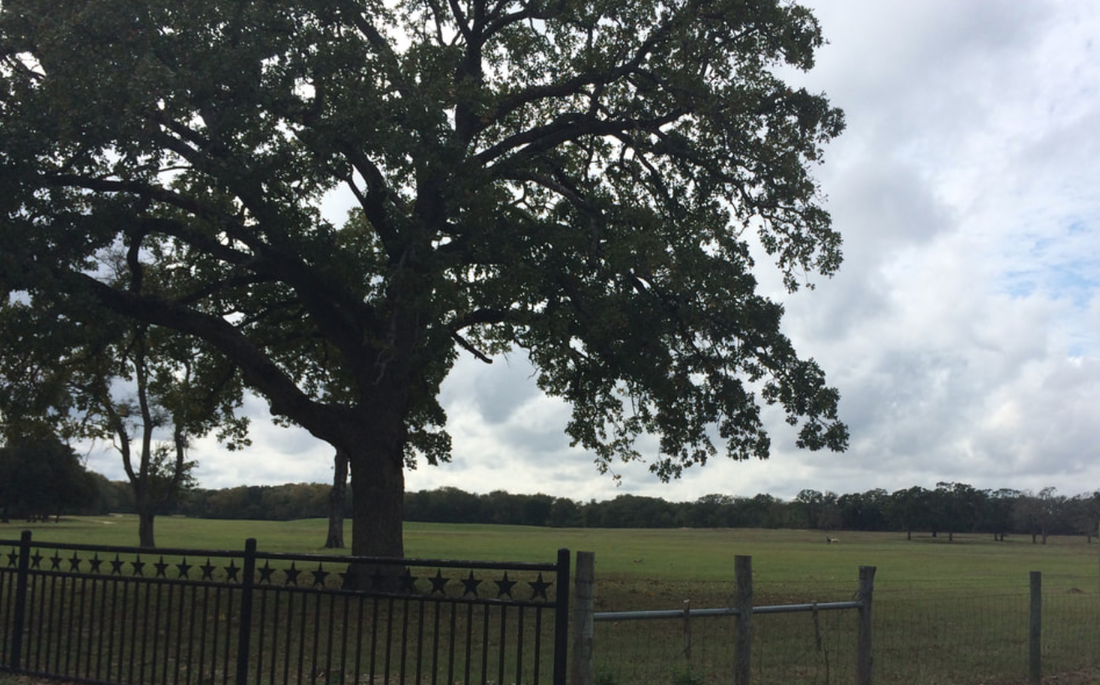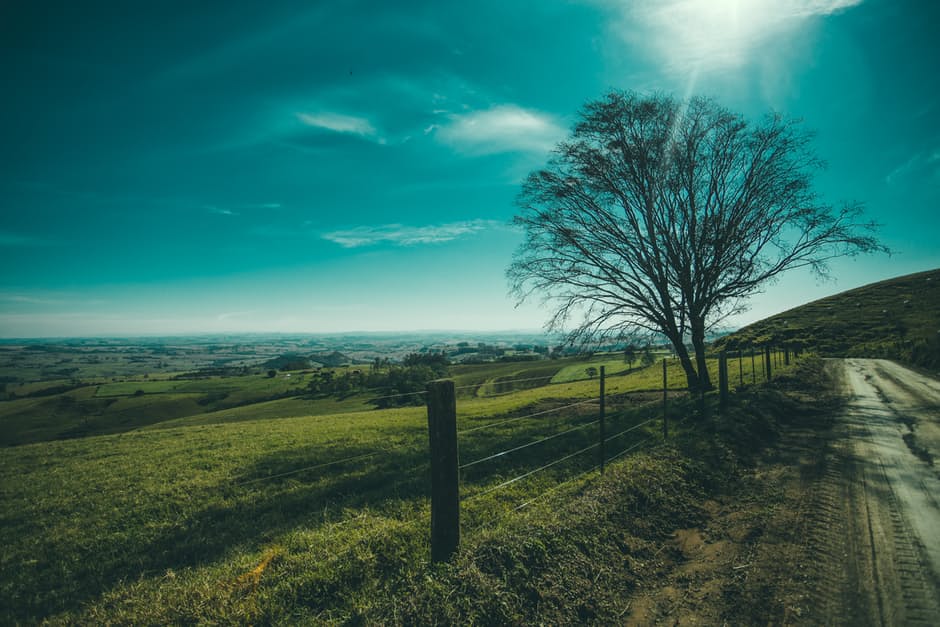|
In the City of Austin, there are protected tree ordinances to preserve and promote the growth of healthy trees. If you are interested in developing a lot, remodeling a home, or adding an accessory dwelling unit to your property, it’s helpful to understand these tree regulations. The City of Austin determines which trees are protected by looking at the size of the tree, type of tree, heath of tree, and the site. Trees are measured at the diameter, at 4.5 feet from the ground. A tree with a diameter of 19 inches or greater is protected by the City of Austin’s tree ordinance. If you find a tree with a diameter that exceeds 19 inches on the subject lot, that does not mean all your development plans come to a shattering halt. It does mean, that your process is going to be a bit more difficult. You will need to submit a Tree Ordinance Review Application at the same time you submit your residential building plan. The application will be reviewed by a City Arborist, and depending on your plans you may also need to obtain a tree survey and or a tree inspection. The Critical Root Zone requirements of the Tree Ordinance most limit the development potential of a lot with one or more trees with a 19 inch or greater diameter. Proposed development plans must demonstrate that trees will be preserved. The mechanism the city uses to illustrate root system preservation is known as the Critical Root Zone Area (CRZ). The CRZ is based on the diameter of the tree. The formula to calculate CRZ is tree diameter (in inches) x 2, then convert to feet. For example, for a tree with a 30 inch diameter, the CRZ= 60 ft. CRZ can be visualized as 3 circles that surround the base of the tree. The outermost circle is the Critical Root Zone where development is most lenient, here you can impact up to 50% with a driveway, porch, dwelling etc. In the next smaller circle, the ½ CRZ, you could add a ribbon driveway, etc. as long as it is no more than 4” below grade so usually any structure wound need pries with footing no more than 4” below grade. In the innermost circle, the ¼ CRZ, there must be no impact. You can read the entire ordinance in regards to the Critical Root Zone from the City of Austin’s code here. If you are interested in purchasing a development property in the City of Austin, I’d love to share my knowledge with you. Contact me today!
8 Comments
Today, I went to the City of Austin’s Development Service Center to see if a property my client is considering purchasing could be subdivided. I had already done preliminary research, and came to the center with a survey of the property and the knowledge that it’s zoned SF3. Anyone considering purchasing a property that they want to change should of course do their own research. However, I wanted to do a little due-diligence before I sent my client to the city to ask questions himself. I was told that a lot can be subdivided as long as the new lots meet all of the lot requirements for that particular zoning. For an SF3 lot, that means the new lots must each have a minimum lot size of 5,750 square feet. For SF3 lots in the City of Austin, there are building setbacks. There are 15ft street side setbacks, 5 ft. interior side setbacks, and 10 ft. rear setbacks. In order to subdivide a lot, the new lots must also be at least 50 ft. wide at the 25 ft. front set back. If the width is less than 50 ft. wide, you can subdivide the property with one lot becoming a flag lot. Flag lots require a minimum lot width of 20ft or 15ft if two or more contiguous lots share a common driveway and there is room on the other sides of driveway for emergency/utility use. Building on the newly subdivided lots must also conform with current regulations for City of Austin SF3 lots. The maximum building on the lot is 40%, and the maximum impervious coverage on the lot is 45%. The subdivision process for normal lots (minimum 50 ft. wide) takes about 3-6 months with the City of Austin. For flag lots it can take 6-9 months. Normal subdivision costs approximately $6-7K in city fees. The flag variance would cost an additional $4k. For any subdivision you will also need civil engineer drawings, and new surveys which would be an additional cost.
If there are any other unique site characteristics that would impede your ability to develop the site in accordance with city regulations such as steep slopes, drainage systems, trees, or existing non-compliant structures, you can request a variance through the City of Austin’s Board of Adjustment. This would entail additional fees and time. If you’re wondering what you can do on a lot within the City of Austin, The City of Austin’s Development Services Department is a great place to start. You may also be interested in reading my article, What can one do on this property? Considering land characteristics, zoning, and restrictions. If you’re considering purchasing a property in Austin, contact me today. I’d be happy to walk you through the process. If you’re thinking about buying a lot in Austin, there are a few things you should consider. First, can you do what you want on this lot. Are there restrictions in regards to building, use, or activities that would prohibit you from doing what you want to on this piece of property? Second, you need to consider the physical qualities of the lot. Are the inherent characteristics of this piece of land in alignment with your goals for the property? Lastly, you need to consider the man made infrastructure associated with the property- utilities and roads. First, you want to consider what restrictions there are on the lot you are interested in purchasing. Restrictions can be imposed on a given lot for a number of different reasons; however, usually these are in place to control the appearance and quality of life of a community. Restrictions may minimal such as “no pig slaughtering facilities allowed” or they may be very specific such as “exterior of home must be constructed of limestone”. If you want to build a barnodominium on your lot, or park a tiny house on it for a few years you should definitely be paying close attention to the lot’s restrictions. So, how do you find the restrictions. Your first step should be to ask the listing agent/owner for a copy. They should be able to provide you a copy or you can ask a title company for a copy of the title commitment and associated Schedule B documents. Pay close attention to the Schedule B documents. These documents, sometimes referred to as the everything but documents, outline the areas the tile policy will not cover. Make note of any easements, these will also be shown on the survey, and make sure they will not prohibit you from doing anything you would like to do on the lot. Also, pay close attention to the building requirements. Some communities may mandate that you build on the lot within a certain time frame or have specific square footage minimums or maximums. Lastly, look out for mineral leases. If you don’t want the possibility of someone having the ability to come on your land and drill for oil at their will, make sure there is no mineral lease associated with the lot. The physical characteristics of a lot are important to consider when purchasing land in Austin as well. Google earth will definitely be your friend when doing preliminary research on a lot you are interested in purchasing. Check to see if it’s in the floodplain. Look at the property on a topographic map to make sure it’s not a small piece of level land with a sharp cliff that covers the rest of the lot. Look to see if there are large trees that would be in the way of your dream home site, or a creek bed that doesn’t conform with your vision. MapRight is another great tool for assessing a lot’s potential from the comfort of your computer. One of the most important considerations when deciding what lot to buy in Austin is in regards to utilities. You need to know what utilities the property currently has, and if it doesn’t have utilities you will need to determine how much it will cost to get these. Is your only option for water to drill a well? You should check with local well companies to see if it’s even possible for you to drill on your lot, and if you do, will your water be consistent? Ask about the depth of the well and anticipated gallon/minute rate. For power, you will want to find out if the power lines are already run to the property? Are they just at the street, and you will need to pay to have them brought to the home site? If so, find out how much that will cost. Additionally, consider the lot’s current accessibility to wastewater and gas if those are utilities you would like to have on your lot. Determine if your lot is easily accessible. Hopefully, your lot is located on a public road of some sort. Maybe it’s not, and your lot was just created when an owner decided to subdivide his property. Determine how much it’s going to cost to pave your driveway, and if you drive a brand new Mercedes, you may not want to purchase a lot on an unpaved road.
Buying a lot in Austin allows you flexibility. However, there are many items that will restrict the freedom you have to do what you want on your lot. Pay close attention to the restrictions, easements, and natural characteristics of a lot before you buy, and don’t forget to run the numbers. You may be able to get a great deal on an unimproved lot, but you could wind up paying a fortune on clearing and utility set-up. If you’re considering buying a lot in the Austin area, contact me today. I’m happy to walk you through the process. Click here, if you want to see current lots available in the Austin area. What can one do on this property? Considering land characteristics, zoning, and restrictions5/23/2017 Are you considering the best use for a piece of property you own, or wondering if you can build 100 condos on a lot you're considering purchasing? Well, there are a variety of considerations you will want to take when determining what you can do with a given parcel of land. Land characteristics, zoning, and deed restrictions all influence what one may do with a piece of property.
First, you want to consider the physical attributes of the land. Look at the lot’s size and geographic position. Are there any natural elements influencing the way you can use the land? Is there a river running through the property, or a pond in the middle? Is the land incredibly sloped or is it located in the floodplain? How will one access the land? Does it have frontage on multiple streets or only a narrow entry as seen on a “flag lot”. You also want to think about the size of the lot, existing roads, and access to utilities. Next, you want to consider how the property is zoned. If the property is located within the City of Austin, I go to their zoning profile report tool to get a fairly good estimate of how the property is zoned. You can then cross reference this data with the City of Austin’s permitted use chart to determine what uses are allowed for that zoning. However, if you find that the subject property is not zoned in a way that allows you to do what you would like, you are not necessarily out of luck. Zoning can be changed, and is easier to change if the proposed zoning change conforms with the existing characteristics of the neighborhood. Another important component to consider are the deed restrictions for the property. Title can usually pull these records if you don’t have them already. If your property is located in an unincorporated area that is not subject to any municipal zoning regulations, you will want to start by analyzing the deed restrictions. Oftentimes, you will find deed restrictions that dictate the type of building materials that can be used on a property, the size of buildings, as well as the permitted uses for a given piece of land. If you are considering buying a property and wondering if you can do what you want with it, give me a call today - I’d love to help you navigate this process. Similarly, if you are thinking of selling your property, it’s a good idea to know what development potential the property has. This will influence the asking price for the property and how one should best market the property. In an effort to increase the current housing stock, the City of Austin has passed a number of initiatives in recent years to ease the process of adding an accessory dwelling unit (ADU) to your lot. These separate stand-alone residences essentially allow for two independent fully livable buildings that can be legally separated as well. Traditionally, if you wanted to build two homes on one lot and sell them to different purchasers you would need to have the lot subdivided. Now, owners and developers can do a simple condo regime to account for the two units.
Originally, the ordinance only allowed for the development of such secondary units on lots of at least 7,000 square feet. However, amendments in recent years have reduced the lot square footage requirements. Additional regulation changes included removing cumbersome parking requirements, increasing the maximum size of the accessory dwelling unit, and decreasing required setbacks between the two buildings. If you are considering building a secondary dwelling unit on your lot, the best place to start is by looking at the exact requirements as outlined in the city code. A few highlights from the code in relation to ADUs are as follows:
These secondary units represent a great opportunity for Austin to expand the affordable housing stock available, increase density while limiting urban sprawl, and allow residents to make a profit on their existing investments. If you're worried about the hassle of red tape involved, feel free to give me a call. I'm happy to walk you through the process. |
BLOGSharing Austin real estate updates, home owner tips, & more. Archives
February 2024
Categories
All
|










